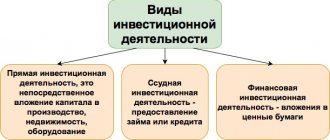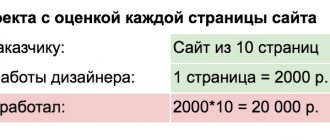An investment program is a set of investment projects that are united by one goal. It contains a complete list of investment objects, investment volumes and strictly defined time frames.
In economics, it is customary to distinguish between two main types of investment programs:
- government;
- at the enterprise level.
Let's take a closer look at both varieties named above.
Instructions for compilation
Of course, in order to interest investors, it is necessary to competently draw up an investment program. You should start with a description of the main goals and objectives, for example, this could be the creation of a motor transport enterprise, the construction of real estate, the acquisition of modern equipment, etc. Information about the amount of financing and how it will be carried out, as well as the duration of the preparatory period, must be indicated. The preparatory period includes renting, registering an enterprise, obtaining the necessary permits, etc.
It is necessary to describe all planned expenses in detail and step by step. This applies to the purchase of equipment, raw materials, costs for the acquisition and installation of specialized equipment, repair work on premises, and the formation of working capital.
It is required to carry out calculations for the production program, which include creating your own brand, advertising and promoting a product or service. You also need to calculate the volume of planned revenue for the entire investment period and indicate the full amount of expenses, which will include the purchase of raw materials and equipment, wages, rent and electricity, etc. Such indicators are very important for potential investors.
At the state level
Federal or state investment programs are a document approved by the Government of the Russian Federation containing a plan of investment activities that are aimed at modernizing and developing priority sectors of the economy.
Such investment government programs are created by relevant ministries and financed directly from the federal budget.
Targeted Investment Program (TIP)
The federal targeted investment program is a document providing for the allocation of state budget funds for the development of infrastructure, economics and social sphere of a separate subject of the federation. As part of targeted investment programs, the following activities can be planned:
- construction of factories and enterprises;
- modernization or technical re-equipment of existing industrial facilities;
- improving the region's transport infrastructure;
- investments aimed at improving the lives of citizens and developing the social sphere;
- and so on.
Each targeted investment program is developed based on fundamental principles. The main one is the efficiency of investments. According to it, funds allocated from the relevant budget must be used in a targeted manner and bring maximum effect. Other principles are:
- focus of investments;
- exact execution of the instructions of the President of Russia;
- centralization of investment resources;
- priority of funding.
Each targeted investment program (investment program) is long-term in nature. In other words, several years are planned for the implementation of its provisions.
In addition, targeted investment programs can also have a narrower focus. They can talk about the development of a single sector of the economy and the national economy:
- science and innovation;
- public utilities;
- healthcare and physical education;
- major repairs of dilapidated and emergency housing;
- education and culture.
This segmentation can be continued further. Let's take the education sector as an example. AIP can be aimed at the development of preschool, school, secondary specialized or higher education.
In our country, targeted investment programs appeared in 2006.
Assessment methods
Without a doubt, no investor will finance a project without assessing the potential risks. The owner of the assets has the right to assess the potential of an investment on an intuitive level, but this method will not give any accurate results.
One of the popular ways to determine the feasibility of an investment is to calculate the total costs. The calculations include all expenses that will definitely arise during the implementation of the project. Additionally, analysts include adjustment percentages in force majeure situations.
A more complex but effective method for evaluating investment programs is determining profitability and efficiency. Various indices and coefficients take part in the process. For example, one of the main indicators in the analysis is net present value. It is calculated using a complex formula, takes into account all costs of the investment object, and shows the potential for profitability in terms of price changes in the future.
Additionally, analysts calculate the return on investment index, defined as the ratio of net capital to total costs. The internal rate of return will show the amount of potential income based on the results of the project.
One of the methods of statistical analysis is the payback period of investments. Investment efficiency according to this indicator is defined as the limit to which the amount of starting capital can be covered by the income received. From the moment the total profit from the activity exceeds the amount of operating and capital costs, the program will be recognized as effective and profitable. In simple terms, this is the period when the investor will be able to return his finances.
Another important indicator is the investment efficiency or project profitability ratio. It is determined by dividing the average profit by the average investment. This index is used by investors to evaluate short-term projects; over long periods it is ineffective and provides false information. If the owner of the assets plans to invest under a long-term program, it is important to take into account the parameters of price changes for each of the reporting years.
For large programs, it is advisable to use multi-criteria methods, when several indicators are taken into account in the analysis. For example, for a budget investment project, payback periods, stability of capital gains, risk percentage, social and economic efficiency are taken into account. At the initial stage, only predicted values are involved in the calculations; as the project progresses, the accuracy of the analysis increases.
To select the most effective and profitable investment project, an evaluation method is used based on a list of criteria. For each specific situation, this list is determined individually. That is, the investor prepares a detailed list of all the points that are expected to be achieved after the launch of the program.
The comparison is carried out point by point, the owner of the capital compares all aspects of financing. Thanks to this method, not a single nuance will be missed. The criteria differ according to the types of investment programs, strategic decisions, and the duration of the project. Let us list the basic points that are assessed at the stage of drawing up an investment scheme.
It is important for enterprises that the overall operating strategy does not contradict the investment plan. In extreme cases, adjustments are likely to be made if warranted. An analysis is carried out of the project’s compliance with the risks assumed by the company, innovation, development potential, and time planning.
On the financial side of the issue, the volume of investments, the planned amount of net profit, and initial costs are compared. Additionally, the payback period and the availability of finance for specific time periods are assessed. It is important to understand whether the implementation of this project will affect other areas of the organization’s life. From an economic point of view, the possibility of obtaining tax benefits will play a significant role.
If the investment is aimed at stimulating research activities, then the effectiveness of the expected discoveries and their impact on other projects are predicted. It is important to take into account the individuality of the patent. If similar actors exist, the likelihood of discoveries being challenged will increase. Products must be unique. To start a project, it is necessary to calculate raw material reserves.
Based on production activities, existing capacities and the need for innovation are assessed. Investors check the availability of resources, equipment, and personnel. The geographical location of the object is analyzed. It is recommended to take into account public opinion and other external factors when analyzing the investment program.
Let us outline the risks that an investor will have to face when forecasting and implementing a financing program:
- subjectivity of data on the economic and political situation in the domestic and international markets;
- foreign economic restrictions in relation to the state where the owner of the capital and the investment object are located;
- wave-like fluctuations in market conditions, currency, and other financial assets;
- unpredictability of natural phenomena;
- force majeure situations in production;
- superficial information about the investment object, program participants, etc.
Implementation procedure
All costs for reproducing the provision of targeted public investment are indicated in the registered cost of the project. If no performers are selected as a result of the competition, the element is excluded from government funding, and the allocations are distributed among active or new participants. When releasing capital, responsible managers are required to notify the Ministry of Economic Development of the need to adjust the program.
Each quarter, no later than the 25th day of the first month of the next reporting period, responsible managers report to the customer on the progress of the budget program. After checking the report, the Ministry of Economic Development provides the Ministry of Finance with a summary table for the implementation of the financing plan.
Indicators for the implementation of the objective state investment program based on the results of three and twelve months are published in official sources. Notifications of all adjustments are sent to the State Duma no later than thirty days after the month of the adjustments.
It is planned to complete the construction of the lines:
- “Raskazovka” - “Petrovsky Park”,
- "Nekrasovka" - "Aviamotornaya"
- "Stolbovo" - "Sevastopol Avenue",
- TPK, "Salaryevo" - "Stolbovo",
- "Seligerskaya" - "Dmitrovskoye Highway",
- Art. "Belomorskaya".
448.3 billion rubles in the period 2021–2021 are provided for the construction of highways.
During this period it is planned to build and put into operation:
- 42 pedestrian crossings;
- 81 artificial structures (bridges, overpasses, overpasses);
- About 300 km of roads, including in New Moscow.
Ways to optimally improve investment efficiency
Increasing the efficiency of use of investments can increase the profitability of the project, making participation in it profitable. The following methods are used for this:
- Priority should be given to investments in the most cost-effective and technically advanced means of production. In this case, the analysis of efficiency in the case of production investments is carried out in the same way as for basic ones.
- The focus should be on investing in the production of those types of goods and services that provide the highest return on investment.
- It is worth considering that in most cases, the reconstruction of an existing production facility is cheaper than the construction of a new one.
Enterprise level
In fact, such an investment program represents the practical implementation of the development strategy of an individual enterprise or company. Its effect extends to a certain period of time (year, 5 years). In addition, this program must contain the amount of money to be invested, as well as the specific goal to be achieved through the implementation of investment projects.
Types of financing
For any company, sources of investment financing can be internal and external. Naturally, it is better to spend your own funds on the implementation of investment programs. The problem is that in the vast majority of cases they are not enough to achieve their goals. In such situations, the company seeks external sources to finance its own investments.
Internal sources for financing the enterprise’s investment program can be the following:
- net profit;
- money from the reserve fund;
- funds forming the authorized capital;
- depreciation deductions;
- issue and sale of shares.
External sources for financing the enterprise can be the following:
- bank loans;
- sponsorship;
- funds from targeted government programs.
Through the correct implementation of the investment program, each company solves many current and strategic problems. This can be not only maintaining the existing level of production, but also implementing a long-term development strategy.
Development
A prerequisite for developing an enterprise's annual investment program is the presence of a long-term strategic development plan, which lasts for several years. The investment program can be considered as a coordinated, supplemented and specified annual section of the strategic investment plan.
The development and formation of such a program consists of several sequential, mandatory stages:
- choosing a time interval - you need to set a clear period within which investments will be made;
- identifying the need for financing - you need to calculate the amount of investment and determine sources of financing;
- calculation of profitability - you need to determine the possibility and time frame for return on investment.
The developed investment program must find a balance between a high level of return on investment and an acceptable level of risk. This is especially important in situations where the company plans to attract outside investors. In their eyes, the combination of these indicators will be decisive.
Housing construction
About 230 billion rubles will be allocated for housing construction in the period 2108-2020.
Subroutines:
- Construction of new housing in Moscow and renovation of existing residential buildings.
- Housing management in Moscow.
- Fulfillment of government obligations.
- Maintenance and improvement of residential areas and other activities in the field of housing.
- Major repairs and modernization of housing stock.









